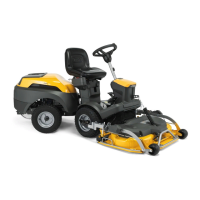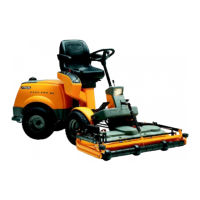WORKSHOP MANUAL
EDITION
PAGE
105 /
124
There are two basic rules to be remembered when using a voltmeter. A voltmeter measures the
voltage difference between the test leads and the voltmeter is always connected across the circuit
under test.
The two rules to remember when measuring current with an ammeter are; an ammeter measures
the current that flows through the meter, and to measure current an ammeter must be connected
into the circuit.
The latter rule means that the circuit must be opened, and the ammeter wired into it. Because this
procedure is usually difficult, an ammeter is seldom used for troubleshooting.
An Ohmmeter is used to make resistance measurements and to check continuity through wires
and electrical components.
There is one rule to keep in mind when using an ohm meter. The ohmmeter has a self contained
battery and requires no electrical power. Using the ohmmeter on a circuit that has voltage applied
may result in damage to the meter.
- Disconnect the battery from the machine when performing Ohmmeter tests or
damage to the Ohmmeter may occur.
- An ohmmeter reads the resistance of whatever component is connected between
the test leads. It can be used to check wires, coils, light bulbs, or any item that conducts current.
Before searching for an electrical fault, it is advisable to carry out some preliminary checks to ex-
clude the most trivial causes:
– Check that the battery is charged.
– Check the integrity of the fuses and relays.
– Check the wiring for damage, cracks or abrasions in the insulation, and secure the connectors
to the components.
In some cases, after a long period of use or in case of mechanical damage, the cables
passing through the articulated joint may be damaged.
The following table shows the main problems attributable to the components of the electrical sys-
tem, with the actions to be taken to solve them and reference to the operating instructions.

